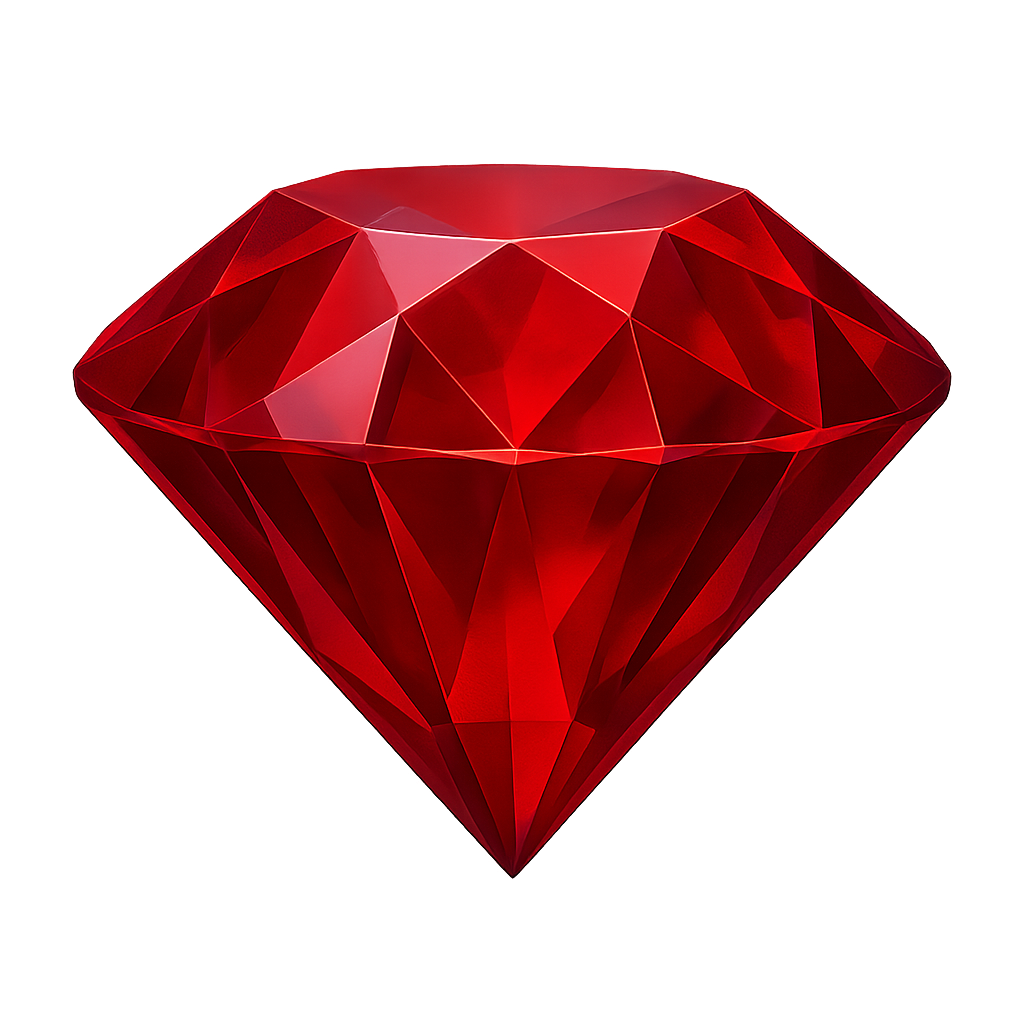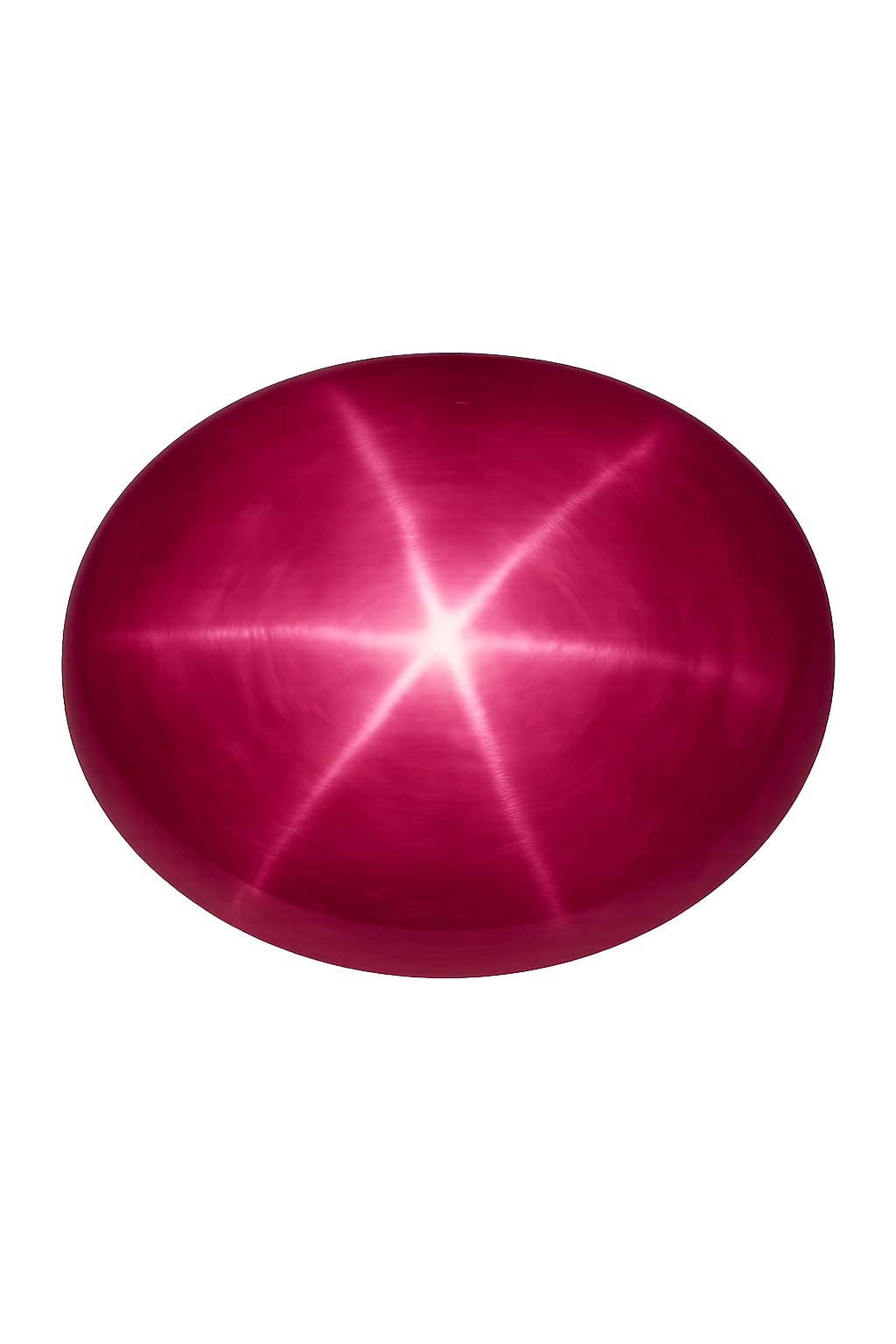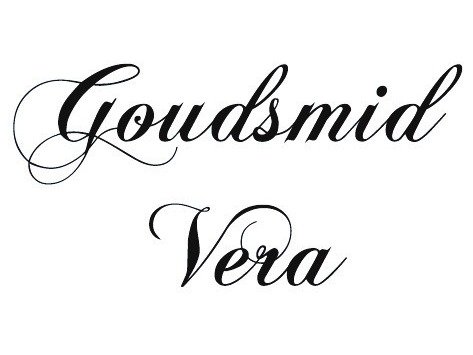
Ruby
Color: Ruby is found mainly in shades of red, ranging from pinkish red to deep red. The color is caused by traces of chromium in the crystal, which absorb light and give the stone its characteristic red glow. The most valuable rubies display a deep, saturated red hue.
Hardness: 9 on the scale of Mohs. Ruby, like sapphire, belongs to the corundum family. It is a very hard and durable gemstone, suitable for jewelry worn daily.
Location: Important sources include Myanmar (Burma), Thailand, Sri Lanka, Madagascar, Mozambique, and Vietnam.
Types and Characteristics:
-
Burmese ruby: Intense red, also called “pigeon blood”; very rare and valuable.
-
Thai ruby: Often slightly darker red with brownish undertones.
-
African ruby: Comes from Mozambique and Madagascar; from pinkish red to bright red.
-
Star ruby: A special variety of ruby with a star shaped pattern on the surface, caused by rutile inclusions.
Inclusions: Most rubies contain small natural inclusions, also called “silk”, which give the stone its character. Completely inclusion free rubies are rare.
Cut: Rubies are often cut in round brilliant, oval, or pear shapes; a well executed cut maximizes the color and brilliance of the stone. Star rubies are usually cabochon cut to make the star effect visible.
Value: The value of a ruby is determined by color, clarity, size, and quality of the inclusions. Deep, pure red stones without visible inclusions are the most valuable. Star rubies are particularly rare and can command a higher value due to the star effect.

